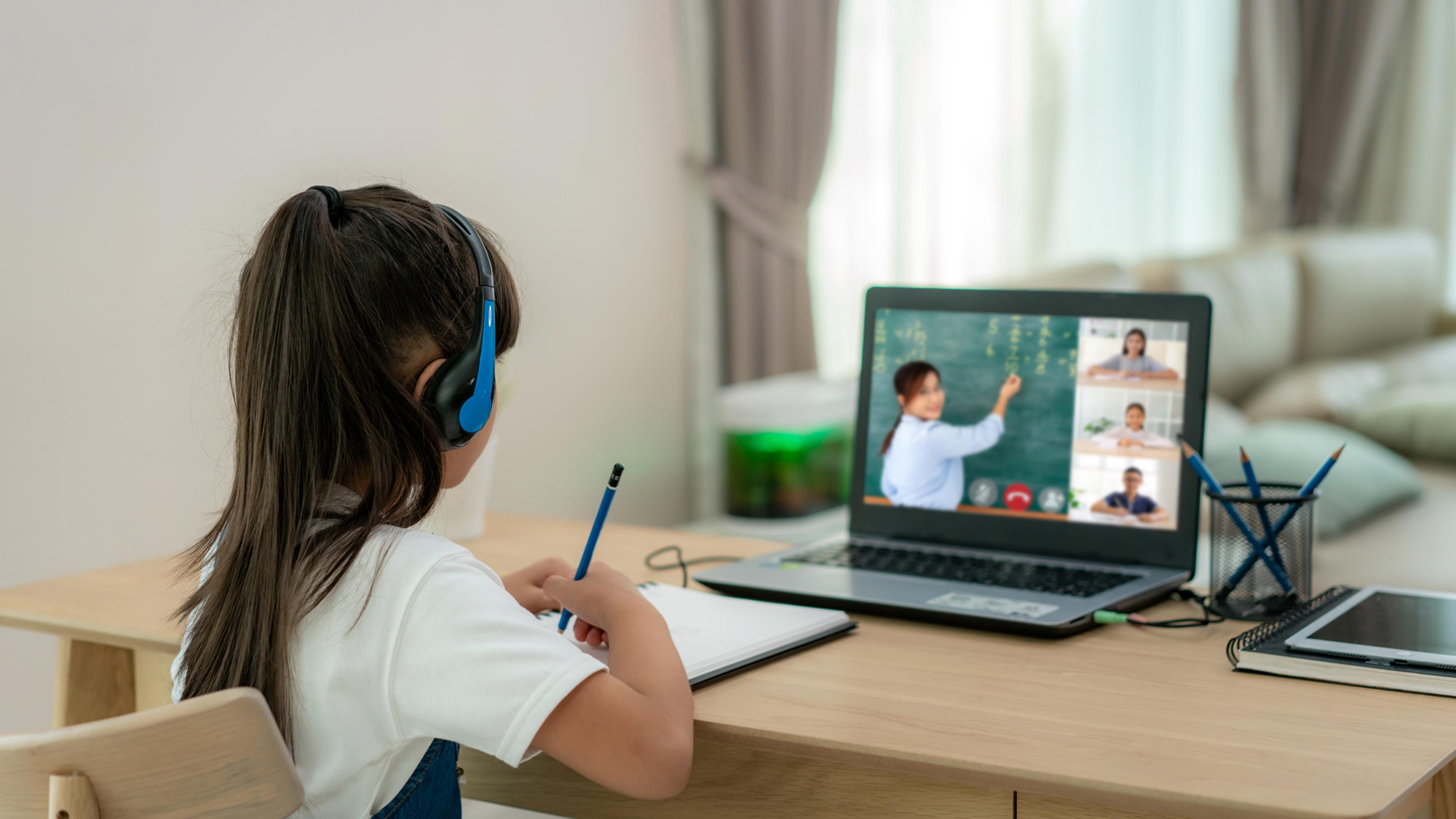When Will U.S. Public Schools Re-Open? A Sobering Forecast From The Kiplinger Letter
School closings already have delivered a costly hit to lifetime earnings for today's kids as a slow ramp-up of in-person learning in the nation's K-12 public schools begins.


On the whole, K-12 public schools won’t be back to normal this school year. The reopening status of schools varies greatly and the data are hard to track. According to Burbio, a local data service firm, most students in Wyoming, Montana and Florida attend schools that offer daily in-person learning. In stark contrast, many counties in California, Washington, Maryland and New Mexico offer only a virtual option. Other areas are in between.
Two-thirds of public schools have at least some in-person classes. 41% of students attend a school that offers in-person, everyday classes, while 26% are in a hybrid setting. About one-third of public schools remain in virtual settings, down from a high of about 62% around Labor Day, as the 2020-21 school year started.

Sign up for Kiplinger’s Free E-Newsletters
Profit and prosper with the best of expert advice on investing, taxes, retirement, personal finance and more - straight to your e-mail.
Profit and prosper with the best of expert advice - straight to your e-mail.
But bear in mind, many parents are opting to keep their kids at home even if the school offers daily in-person learning. Take Miami-Dade, Fla., for example, a district with 350,000 students open to daily in-person classes: 52% of parents choose the remote option. About half of parents in a recent poll say their child is attending school only online. 42% say they’d choose online for the rest of the year.
The steady shift to more in-person learning will continue as infections ease.
Many large districts mostly closed for months are starting reopening plans, including Chicago, New York City, Boston and Virginia's Loudoun County. Agreements have been struck with teachers’ unions, but the ramp-up could be slow in some areas.
Evidence continues to grow that in-person schooling can be done safely with mitigation efforts in place, such as universal masking, student pods and testing. Many private and public schools have provided safe in-person learning for months.
The Biden administration’s COVID guidance will help more schools open. It gives schools a safety framework with ample specifics, something teachers’ unions were calling for. That should grease the skids a bit to restart some stalled efforts.
But the guidance doesn’t pave the way to normal schooling. For example, one recommendation from the Centers for Disease Control and Prevention’s strategy calls for six feet of physical distancing to the “greatest extent possible.” Adhering to that strictly would mean 50% capacity at many schools, due to space constraints.
Critics say the guidelines are overly restrictive and are urging fast updates to relax and tweak many details, such as how the CDC says to use infection data.
The negative health outcomes of not having in-person school are piling up, such as damage to social and emotional development, and mental health issues.
America’s K-12 students face a dire level of lost learning in coming years, caused by worse learning outcomes for most students in prolonged virtual settings. Issues range from young kids not learning to read to falling a year behind in math.
Affected kids could take a serious economic hit, according to an estimate from consulting firm McKinsey. A student not returning to full classes by January 2021 could lose $60,000 to $80,000 in lifetime earnings. Some have now been out longer. The damage is much worse for black and Hispanic students versus white students.
The problem will be at the forefront of education policy debates for years.
Get Kiplinger Today newsletter — free
Profit and prosper with the best of Kiplinger's advice on investing, taxes, retirement, personal finance and much more. Delivered daily. Enter your email in the box and click Sign Me Up.

John Miley is a Senior Associate Editor at The Kiplinger Letter. He mainly covers technology, telecom and education, but will jump on other important business topics as needed. In his role, he provides timely forecasts about emerging technologies, business trends and government regulations. He also edits stories for the weekly publication and has written and edited e-mail newsletters.
He joined Kiplinger in August 2010 as a reporter for Kiplinger's Personal Finance magazine, where he wrote stories, fact-checked articles and researched investing data. After two years at the magazine, he moved to the Letter, where he has been for the last decade. He holds a BA from Bates College and a master’s degree in magazine journalism from Northwestern University, where he specialized in business reporting. An avid runner and a former decathlete, he has written about fitness and competed in triathlons.
-
 Stock Market Today: Stocks Soar on China Trade Talk Hopes
Stock Market Today: Stocks Soar on China Trade Talk HopesTreasury Secretary Bessent said current U.S.-China trade relations are unsustainable and signaled hopes for negotiations.
By Karee Venema
-
 2026 Disney Dining Plan Returns: Free Dining for Kids & Resort Benefits
2026 Disney Dining Plan Returns: Free Dining for Kids & Resort BenefitsPlan your 2026 Walt Disney World vacation now. Learn about the returning Disney Dining Plan, how kids aged three to nine eat free, and the exclusive benefits of staying at a Disney Resort hotel.
By Carla Ayers
-
 Best Banks for High-Net-Worth Clients
Best Banks for High-Net-Worth Clientswealth management These banks welcome customers who keep high balances in deposit and investment accounts, showering them with fee breaks and access to financial-planning services.
By Lisa Gerstner
-
 Stock Market Holidays in 2025: NYSE, NASDAQ and Wall Street Holidays
Stock Market Holidays in 2025: NYSE, NASDAQ and Wall Street HolidaysMarkets When are the stock market holidays? Here, we look at which days the NYSE, Nasdaq and bond markets are off in 2025.
By Kyle Woodley
-
 Stock Market Trading Hours: What Time Is the Stock Market Open Today?
Stock Market Trading Hours: What Time Is the Stock Market Open Today?Markets When does the market open? While the stock market does have regular hours, trading doesn't necessarily stop when the major exchanges close.
By Michael DeSenne
-
 Bogleheads Stay the Course
Bogleheads Stay the CourseBears and market volatility don’t scare these die-hard Vanguard investors.
By Kim Clark
-
 The Current I-Bond Rate Until May Is Mildly Attractive. Here's Why.
The Current I-Bond Rate Until May Is Mildly Attractive. Here's Why.Investing for Income The current I-bond rate is active until November 2024 and presents an attractive value, if not as attractive as in the recent past.
By David Muhlbaum
-
 What Are I-Bonds? Inflation Made Them Popular. What Now?
What Are I-Bonds? Inflation Made Them Popular. What Now?savings bonds Inflation has made Series I savings bonds, known as I-bonds, enormously popular with risk-averse investors. So how do they work?
By Lisa Gerstner
-
 This New Sustainable ETF’s Pitch? Give Back Profits.
This New Sustainable ETF’s Pitch? Give Back Profits.investing Newday’s ETF partners with UNICEF and other groups.
By Ellen Kennedy
-
 As the Market Falls, New Retirees Need a Plan
As the Market Falls, New Retirees Need a Planretirement If you’re in the early stages of your retirement, you’re likely in a rough spot watching your portfolio shrink. We have some strategies to make the best of things.
By David Rodeck